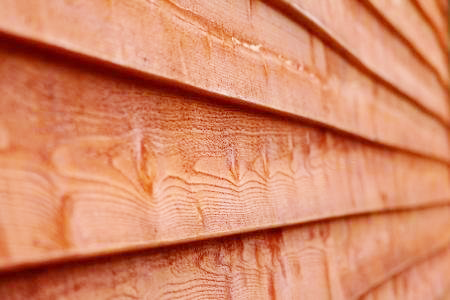Wood Siding
Wood siding has been a favorite choice of homeowners because of its natural look. Wood siding is made from strong softwood lumber that has been pulverized into several patterns designed to overlap or interlock so the board naturally shed sleet, rain and snow.
Board siding, if well maintained can last up to 30 years or more. The categories of board siding include plywood, clapboard, milled board siding, hardwood sheets, and shingles and shakes.
Milled board sidings are cut into a different style and pattern. These are quite often mounted horizontally, but few interlocking patterns can also be installed diagonally or vertically. Dolly Varden, clapboard and bevel are used for horizontal siding, board and batten is generally for vertical siding. Solid wood has a natural beauty that all other siding manufacturer wish to achieve. If maintained well, board siding will last for 30 years or more. Else, it will split, warp, and crack and painted wood siding will peel. In addition, board siding can be food for termites unless it is secured with preservatives. Painted board siding should be re-painted every 4 to 6 years and stained wood siding must be re-stained every 3 to 5 years. Natural wood which is protected by aqua repellent have to be re-coated every 2 years.

If natural wood siding is your choice for your home, you have to choose the grade and species for the material. Wood siding could be milled from redwood, spruce, cedar, fir, pine, and other trees. How to choose the right grade and species? We as contractors help you to choose the wood according to your needs and budget. But for starters, there are some species of trees that are at higher cost and some are easily available than others. Higher grade wood are always costlier than lower grades.
Board Siding Species
Decaying is the biggest problem of wood siding and should be the key factor while selecting the wood. One can opt for cedar heartwoods and redwood which has natural resistance to decay. But cedar heartwood is expensive and redwoods are rare to find. If you want the natural look of the wood you have to shell out big bucks. But if you are thinking of painting the siding, there are plenty of affordable lower grade wood and species available. Other options are fir, pine and spruce-all are available in numerous regions and are more economical.
Board Siding Grades
The several defects such as knots, determine the grades and can generally vary. The grading is done by the established grading agencies such as the Western Wood Products Association (WWPA) and manufacturers have a choice to name the grades for marketing purpose. So “select” grade will defer from one company to another, hence it is important to examine the wood before purchasing.
Moisture content is another important aspect. Do not purchase “green” siding, as it has higher moisture content than kiln-dried siding and may twist or warp when it dries. Before installation, all sliding should be placed at the site so it can modify to the local humidity.
